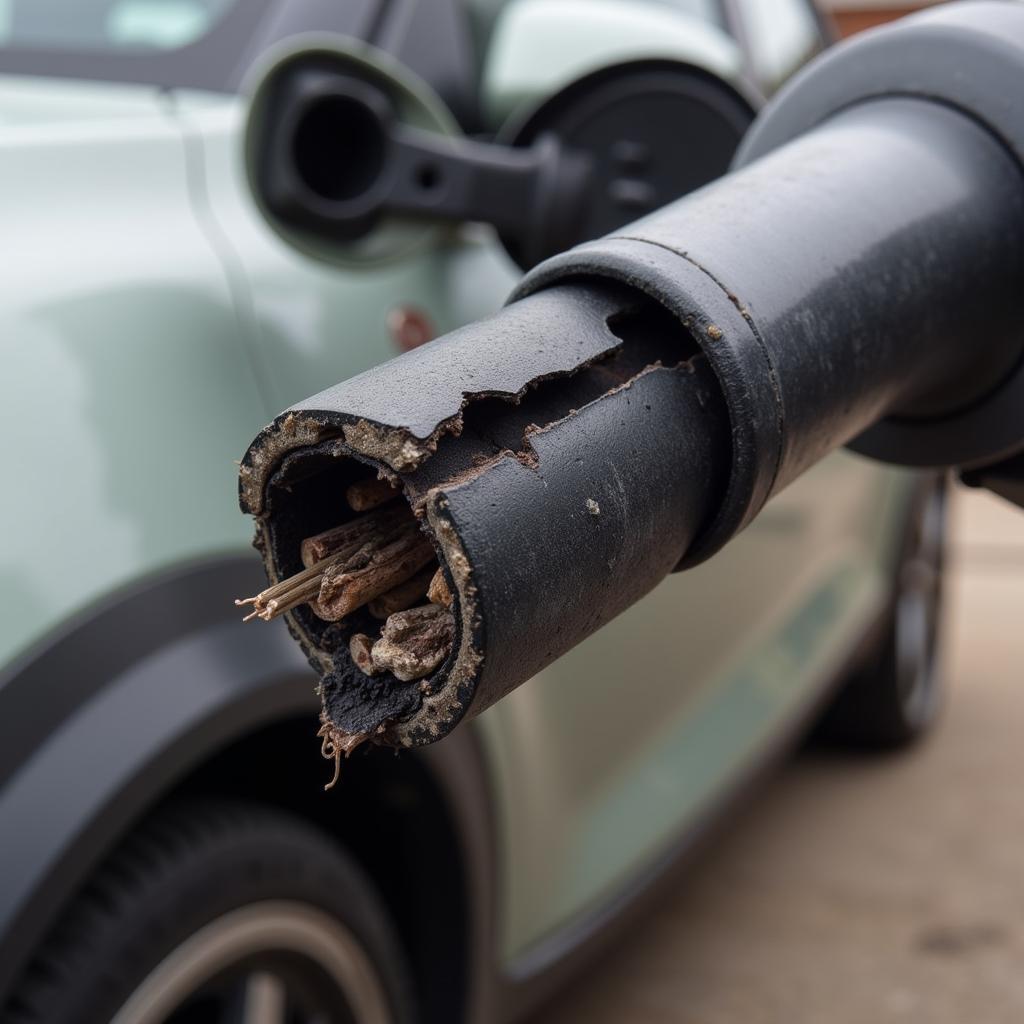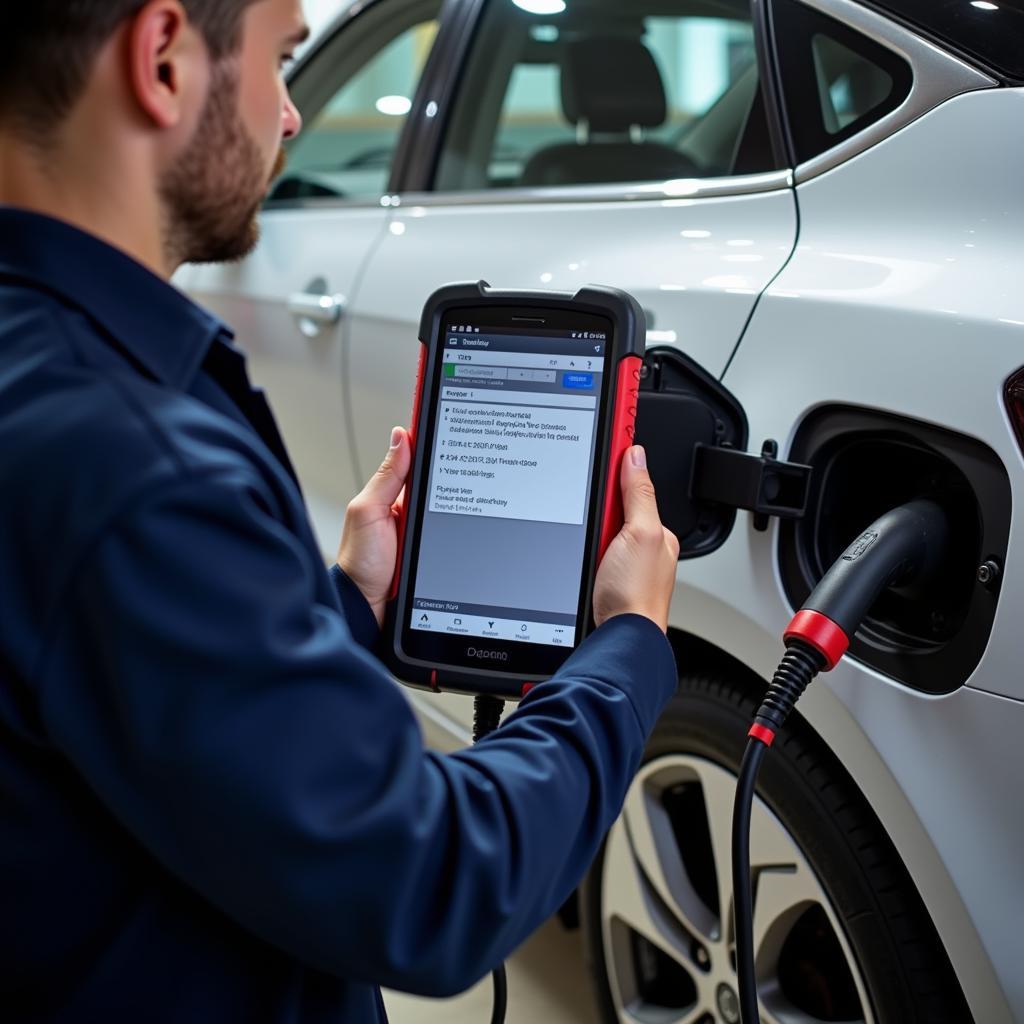Dealing with a car plug-in issue can be frustrating. Whether it’s a faulty charging cable, a problem with the car’s charging port, or an issue with the electrical system, a plug-in problem can leave you stranded. This article provides a comprehensive guide to diagnosing and resolving common car plug-in issues, offering practical solutions for car owners, repair shops, and automotive technicians. If you’re experiencing problems starting your car in cold weather, for example, it may be related to your car plug-in issue.
Understanding the root cause of a car plug-in issue is crucial for effective troubleshooting. Is the problem related to the charging equipment, the vehicle itself, or external factors? This detailed guide will help you pinpoint the source of the problem and implement the appropriate solution. You might find that your specific make and model is prone to certain issues; for instance, some JV car problem articles address common plug-in problems.
Common Car Plug-in Issues and Their Causes
Several factors can contribute to car plug-in problems. Loose connections, damaged cables, or faulty charging ports are common culprits. Environmental factors, like extreme temperatures, can also affect charging performance. Let’s delve into some of the most frequent issues:
- Cable Problems: Frayed or damaged charging cables can prevent proper charging. Inspect the cable for any visible signs of wear and tear.
- Charging Port Issues: Dirt, debris, or damage to the charging port can hinder connectivity. Ensure the port is clean and free of obstructions.
- Electrical System Faults: Problems with the car’s electrical system, such as a blown fuse or a malfunctioning charging module, can also cause plug-in issues.
- Software Glitches: In some cases, software issues within the car’s system can interfere with the charging process.
 Damaged Charging Cable Causing Car Plug-in Issue
Damaged Charging Cable Causing Car Plug-in Issue
Diagnosing Your Car Plug-in Issue
Identifying the specific problem requires a systematic approach. Start by checking the obvious:
- Visual Inspection: Examine the charging cable, port, and surrounding area for any visible damage.
- Try a Different Cable: If you have access to another charging cable, try using it to rule out a cable fault.
- Check the Power Source: Ensure the power outlet or charging station is functioning correctly.
- Consult the Car’s Manual: Refer to your car’s manual for specific troubleshooting steps and information on error codes.
“A methodical approach to diagnostics is key,” says automotive expert, Dr. Eleanor Vance, PhD in Electrical Engineering. “Start with the simple checks before moving on to more complex troubleshooting.”
Solutions for Car Plug-in Issues
Once you’ve identified the problem, you can implement the appropriate solution. Some common solutions include:
- Cable Replacement: If the cable is damaged, replace it with a compatible and high-quality cable.
- Port Cleaning: Clean the charging port using compressed air or a specialized cleaning tool.
- Fuse Replacement: If a blown fuse is the culprit, replace it with the correct amperage fuse.
- Software Update: Check for available software updates for your car’s system, as these updates can sometimes resolve charging issues. Certain mg cars problems can be fixed with software updates, for example.
When to Seek Professional Help
While some plug-in issues can be resolved with simple DIY fixes, others require professional assistance. If you’ve tried the basic troubleshooting steps and the problem persists, it’s time to consult a qualified automotive technician. “Don’t hesitate to seek professional help if you’re unsure about anything,” advises Master Mechanic, James Riley. “Attempting complex repairs without proper knowledge can lead to further damage.” If you’re facing a situation where your car won’t start, and you suspect the issue may go beyond a simple plugin problem, seeking expert help is definitely recommended.
 Technician Diagnosing Car Plug-in Issue with Diagnostic Tool
Technician Diagnosing Car Plug-in Issue with Diagnostic Tool
Preventing Future Car Plug-in Issues
Taking preventative measures can help avoid future plug-in problems:
- Handle Cables with Care: Avoid bending or twisting the charging cable excessively.
- Keep the Port Clean: Regularly clean the charging port to prevent debris buildup.
- Use the Correct Charging Equipment: Always use charging equipment that is compatible with your car.
- Store Cables Properly: Store charging cables in a clean and dry location, away from extreme temperatures. Some car emission problems may seemingly be unrelated, but could in fact be caused by faulty electrical systems, highlighting the importance of maintaining your plug-in systems as well.
Conclusion
Addressing car plug-in issues promptly can save you time, money, and frustration. By understanding the common causes, utilizing effective diagnostic techniques, and implementing the appropriate solutions, you can keep your car running smoothly. If you require further assistance or have any questions, please don’t hesitate to contact us at AutoTipPro. Our phone number is +1 (641) 206-8880, and our office is located at 500 N St Mary’s St, San Antonio, TX 78205, United States.





Leave a Reply